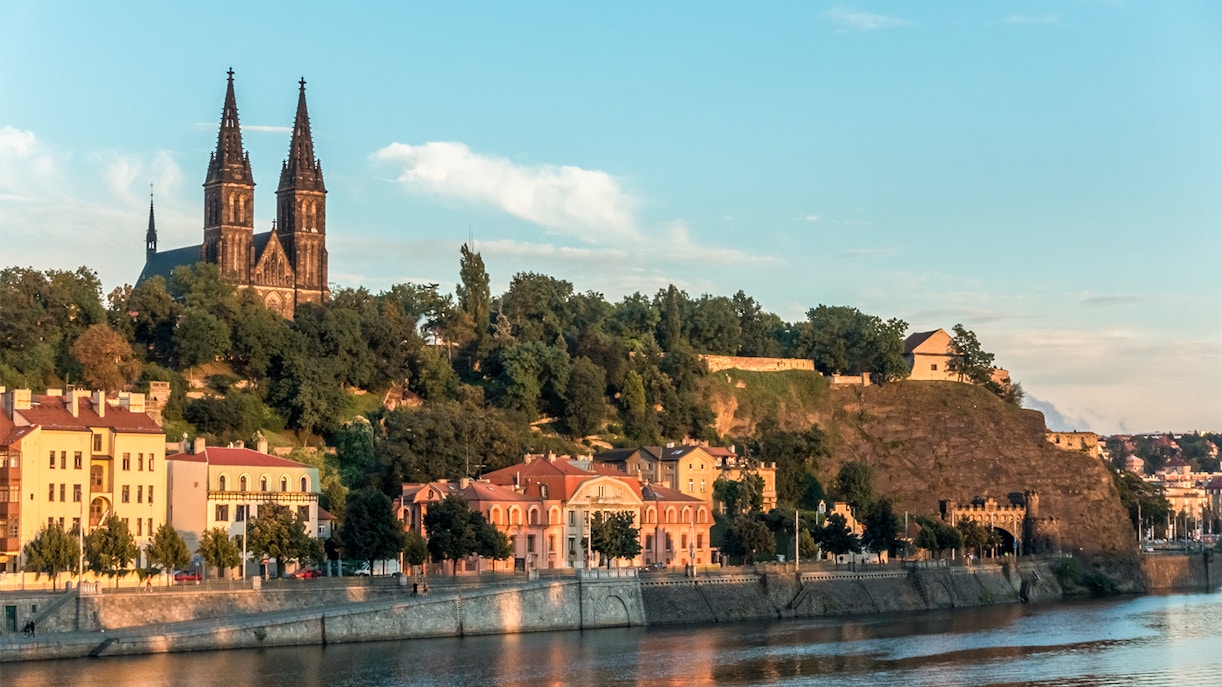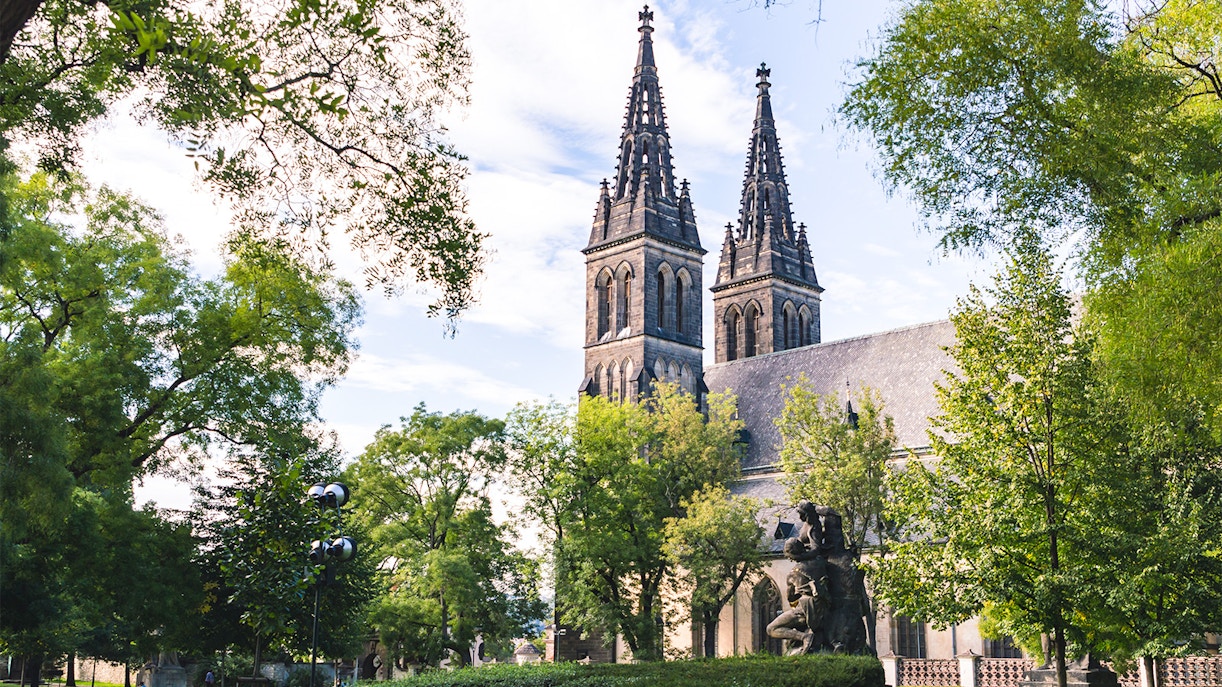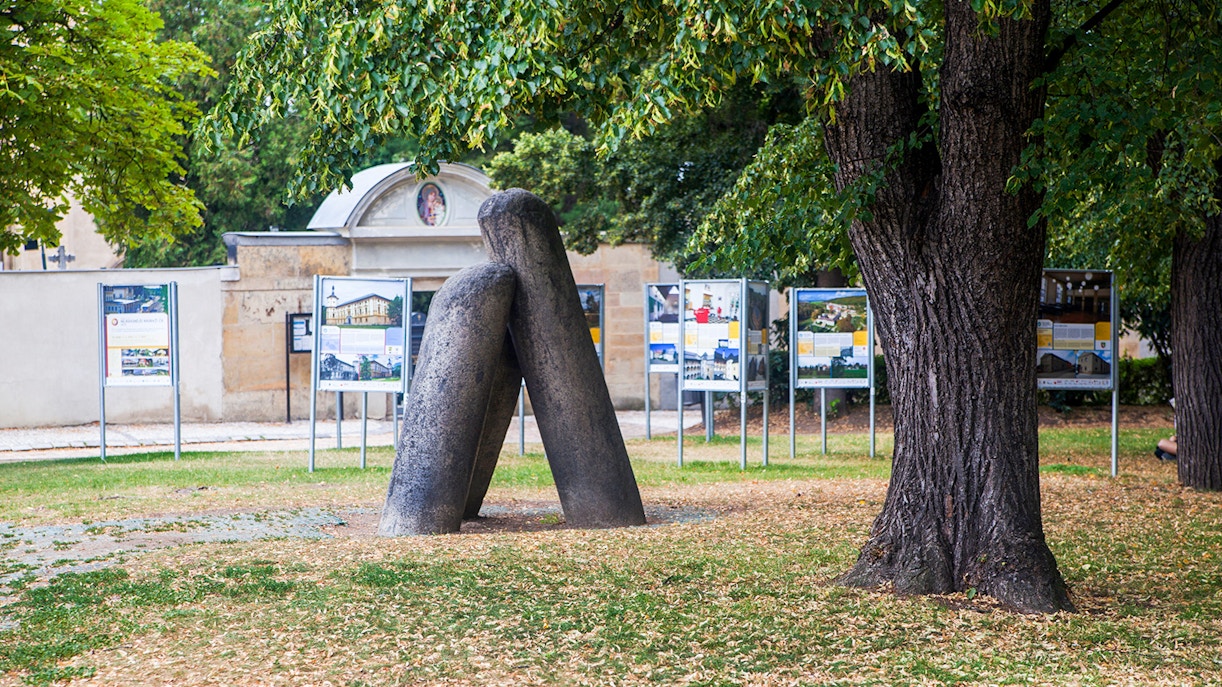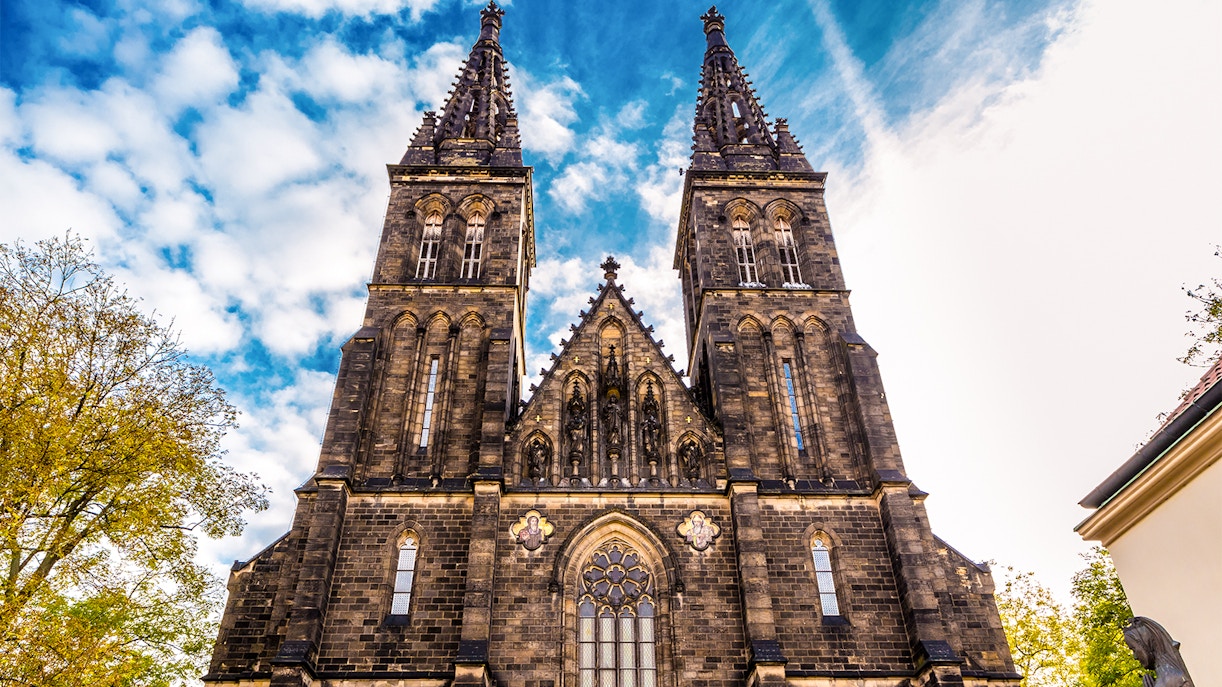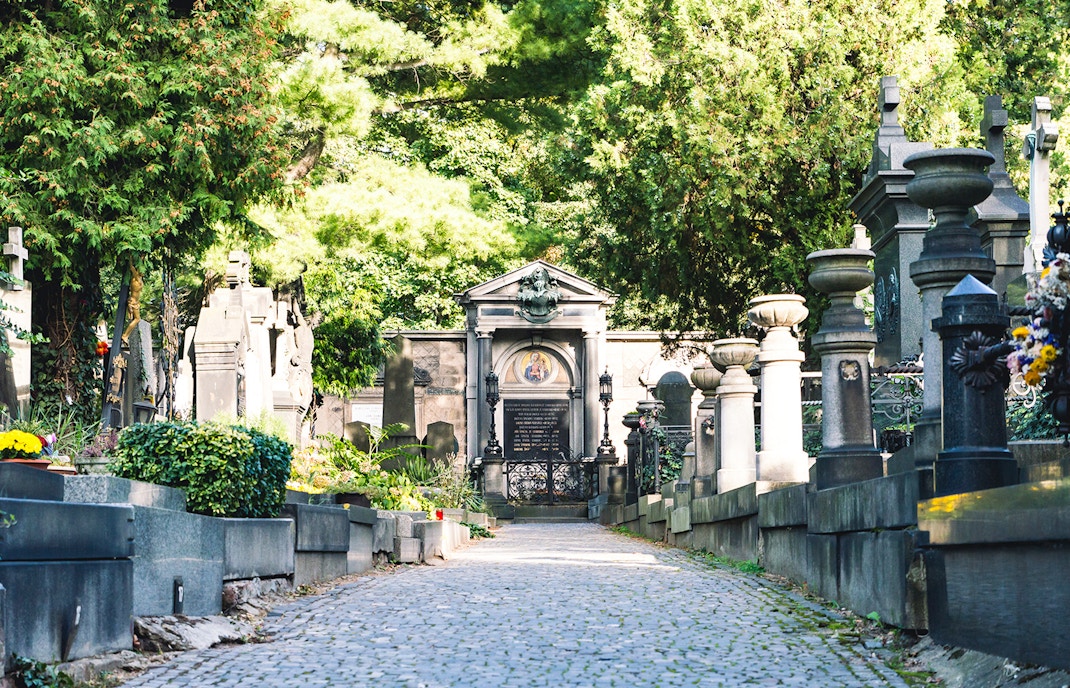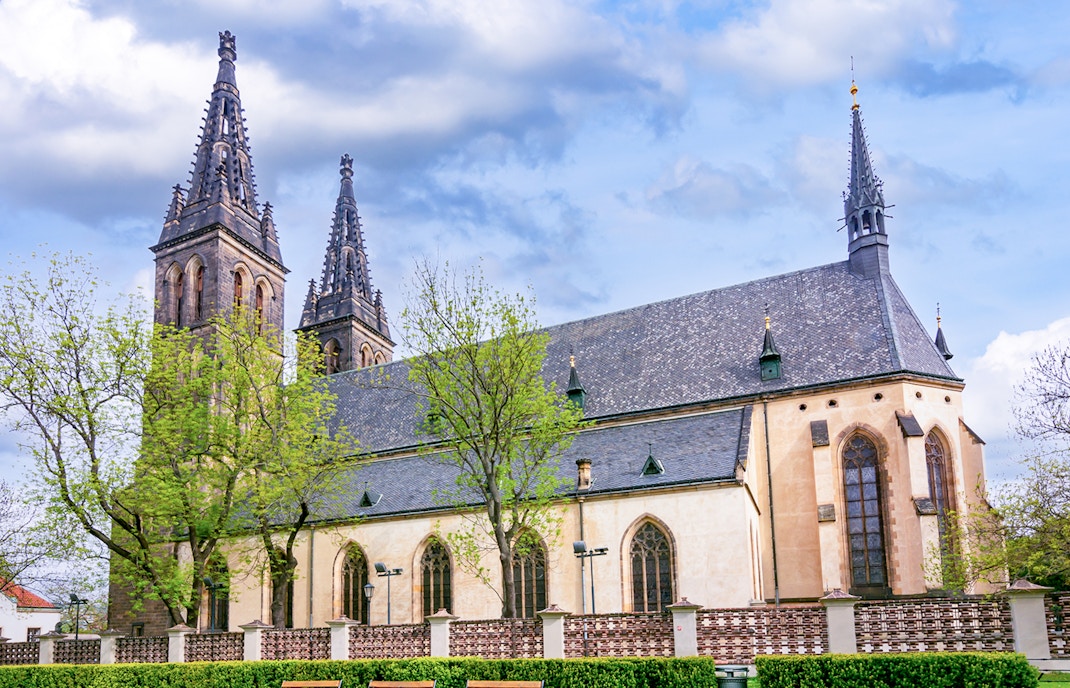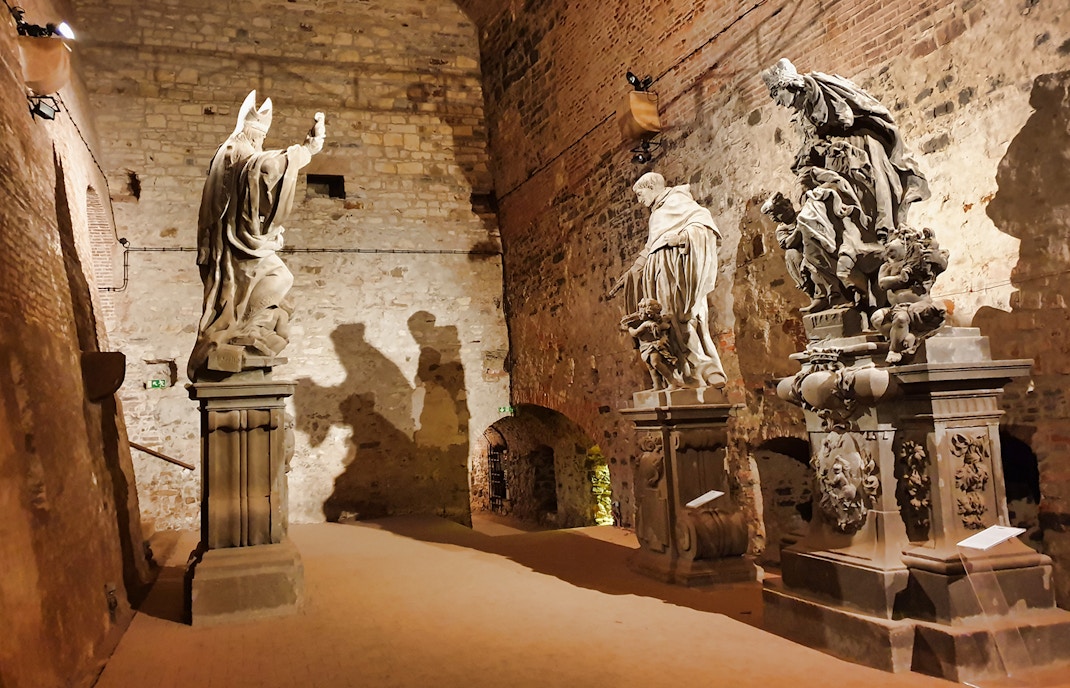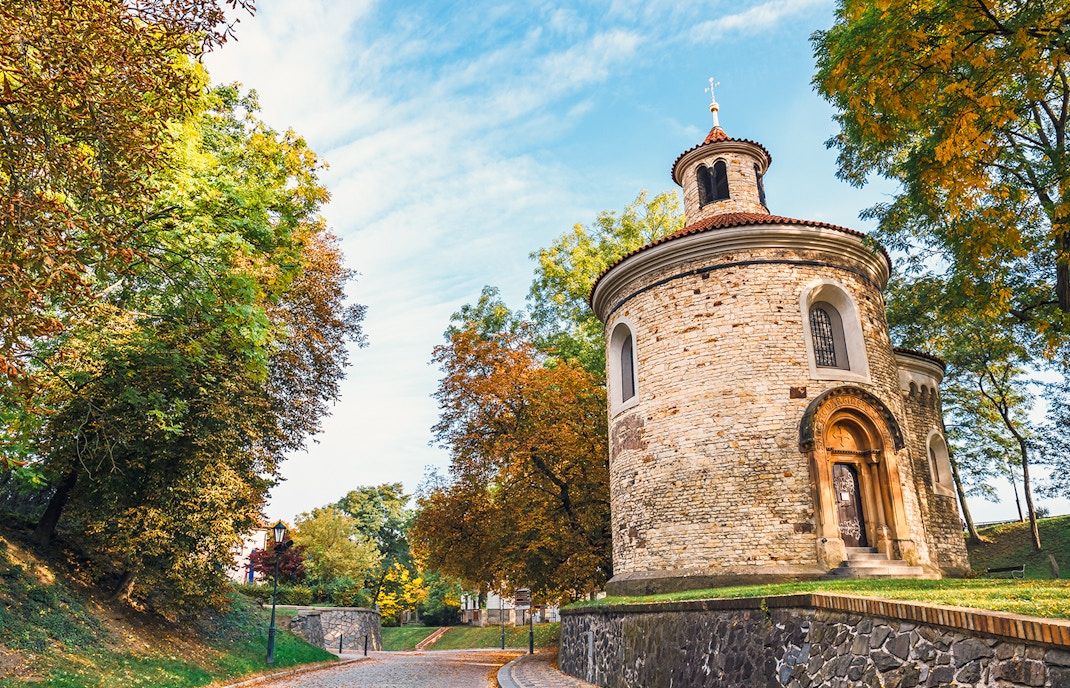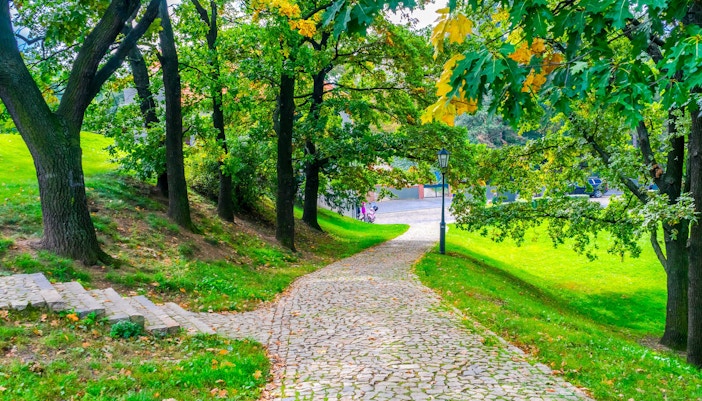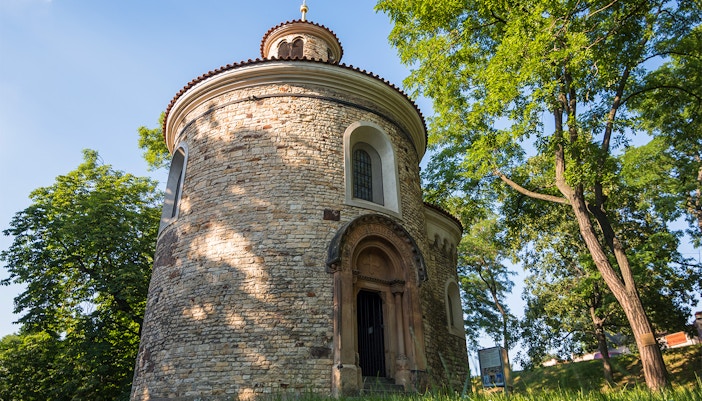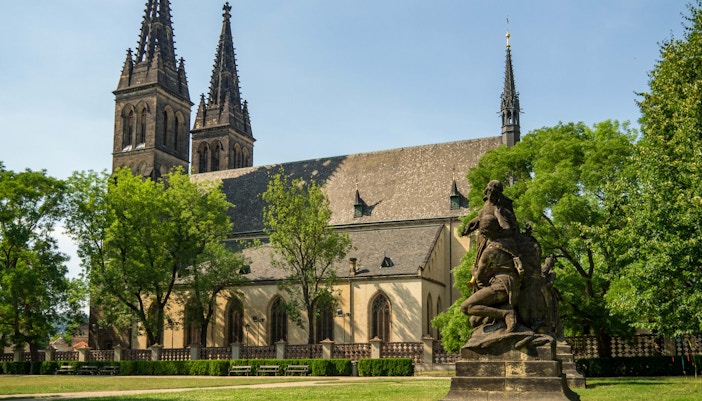Vyšehrad in Czech means “upper castle”. The Vyšehrad Castle, formerly a royal palace, was destroyed and abandoned during the Hussite Wars towards the end of the Middle Ages. Vyšehrad later served as a powerful Baroque fortress. The fortress plays a meaningful role in Czech folklore's oldest legends.
The Vyšehrad fortress is home to numerous historical and architectural marvels and hidden gems like the Basilica of St. Peter and St. Paul, the Vyšehrad cemetery where many notable Czechs are laid to rest, and the Vyšehrad Casemates.


